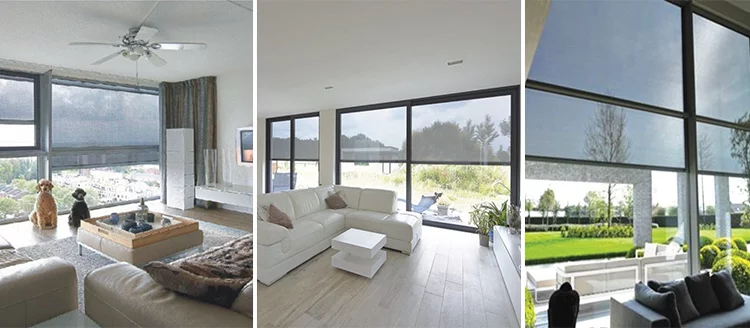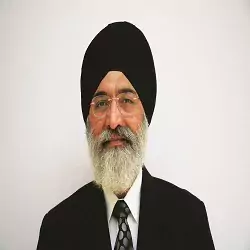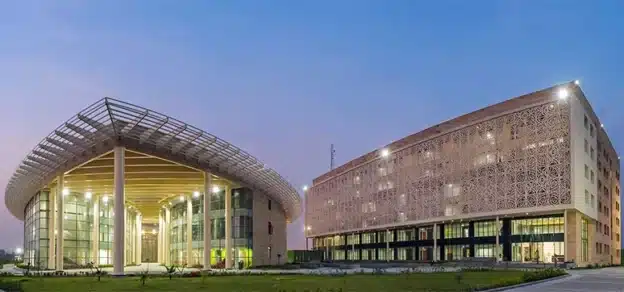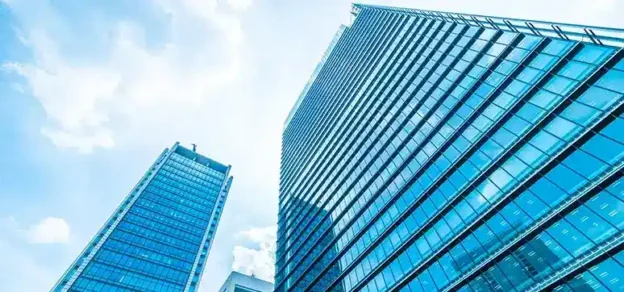All of us want to live, work, play, shop relax in natural light and stay connected to the surrounding spaces and views. Natural Light is healthy and gives us a sense of well-being and comfort. People working in Natural Light are more productive and are also more positive due to mental and visual stimulation as proven in many studies worldwide. Medically too, it has been proven that patients recover faster and feel less pain needing lesser analgesics, when recovering or recuperating in natural light conditions in comparison to artificially lit areas.

Natural light in a building will depend upon several factors and a good building design should result in most parts of the building as well The design should also address the energy transfer. We can call a building or a particular area in a building well-lit or sufficiently lit if there is a reasonably uniform spread of illumination of 200 to 800 Lux. Areas with illumination below 100 Lux, will be dimly lit or dark areas and areas with illumination
above 1200 Lux will be over lit or too bright resulting in glare. (See Fig.1.‘Lux’ and ‘Lumens’)
Transparency: The main or fundamental use of glass is for harnessing natural light and for visibility through the glass. The designers select glass, also for its superior aesthetics but its main function is not to ‘look at’ but to ‘look through’. Transparency in our case, can be defined as visibility or the view through the glass and the resultant feeling of connection to the outside view. Transparency is often perceived to be the same as visible light transmission or VLT.
Transparency is actually a factor as to how truly or naturally you see the outside view for its actual colour and natural feel. Ideally, you should not see glass, but see the view through the glass. A glass with a low VLT can also be more transparent than a glass with a higher VLT if it is neutral in colour and has a lower internal reflection. Transparency or visibility through the glass will enhance the feeling of space well-being and openness. All paths of natural light transmission into a building may not necessarily be transparent. These could be translucent, obscure, ornamental, decorated, etc. Windows or ventilators above eye level as well as skylights will be path of light alone and not transparency.
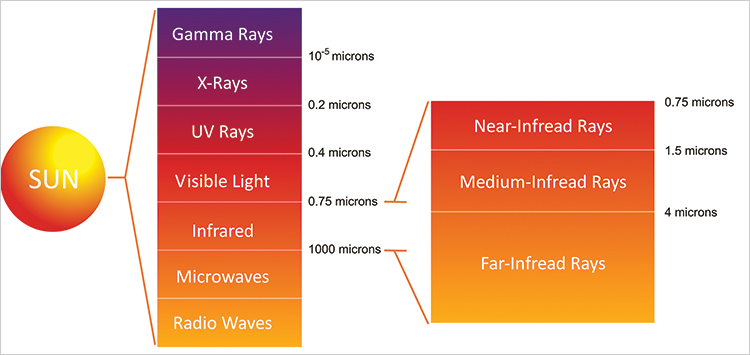 Fig.2: Explains the Percentage of Light and heat portion of the solar energy; Fig.3: Band of wavelengths for different types of radiations or rays.
Fig.2: Explains the Percentage of Light and heat portion of the solar energy; Fig.3: Band of wavelengths for different types of radiations or rays.
Source of Natural Light: The Sun is the source of natural light and the solar flux or radiation, which is actually reaching us, is distributed into 3 main parts. Ultra violet or UV light is only 2-3 percent which causes a burning sensation and is responsible for fading of curtains, upholstery and other interiors.
This is easily addressed by using laminated glass, as PVB in laminated glass filters 99 per cent of the incident UV Light. The portion of visible light is 44- 45 per cent which we want to harness, but it brings along with it 52-53 per cent of shortwave infrared which is not visible but is the heat portion of the radiation of direct sun. (See Fig. 2 & 3)

Illumination Levels and Brightness: The vision through the glass is a result of the illumination levels outside and inside coupled with a few other parameters. Let us assume a dark glass of very low VLT of say 5 or 10 percent, in a window of the room and the room is dark inside, and outside is a normal sunny day. You will be able to see the outside view quite clearly from the room but you cannot see the inside of the room from outside.
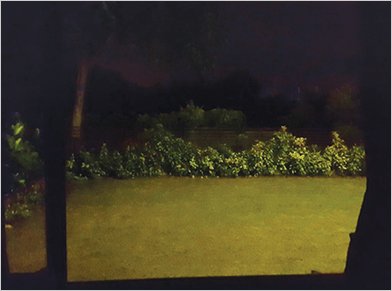
At night, the problem is reversed as there is more illumination inside and outside being dark; we are not able to see through the glass. Internal reflection adds to this problem. Transparency is a problem from the side with more illumination e.g. from outside during the day and from inside during the night. The illumination due to direct bright sun is around 90,000 Lux and in some areas, even up to 113,000 Lux. Compare this to a comfortable illumination of 500 Lux inside a well-lit office. This is a big contrast, but we generally do not practically see, realize or visualize this extremely big illumination difference. (See Fig. 4)
It is the Human eye, which is one of the most wonderful creations of God and is the best camera ever made. It auto-adjusts the light intensity and focus. This enables us to see near and far and also adjust to the brightness or darkness over a wide range of illuminations. Just as in photography, we are able to appreciate the dark areas, only in comparison to the brightest portion of the picture. We realize this phenomenon more clearly, when we suddenly step out of a dark area to a bright area, or vice versa, as coming out of a theatre or going in or when we drive through a tunnel. It takes us a few seconds to adjust to the light conditions.
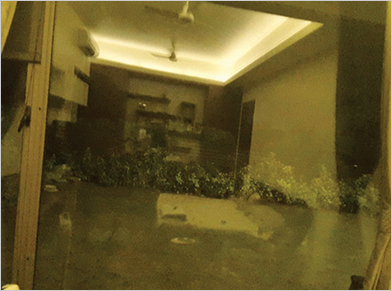
Tints and Coatings: Shading is achieved by the tint of the glass and the coatings on it. Darker glasses will have better shading (lower shading coefficient). This colour of glass and coating may also affect the colour of the transmitted light and it may not show the natural colour of the objects and landscapes outside. The ability of a glass to show the true or natural colours is measured by the ‘colour rendering index’. Visually, the combined effect of colour and coating on the appearance of glass is quite different when seen from the outside and inside as these are two distinct faces of the same glass. One should choose neutral colours with a good colour rendering index to enhance the transparency from the inside.
Normal float glass has a small greenish tinge which is generally not seen to cause any problem or issue as it has a very good colour rendering index. Yet some users prefer an extra clear glass as it does not have this green effect, though it is a bit more expensive. There are anti-reflective coatings also possible which make the glass almost totally invisible and highly transparent. It is used very selectively due to its very high cost.
Reflections: Normal clear float glass, including extra clear float glass, reflects 8 per cent from inside as well as outside and it is 16 per cent for DGU. The reflections are prominent from the side of higher illumination. During the day, we will notice reflection when viewing the glass from the outside but will not notice any reflection from the inside. Internal reflections will be seen during the night when the inside has more illumination and will not be prominent from the outside. Buildings used during the night should prefer glasses with lower internal reflection and also the appearance of glass from the inside should be less metallic and the quality and colour of reflected light should not be too coloured. It is advisable to have a mock-up and examine it during the day and also at night to know what to expect. (See Pic. 1 & 2)
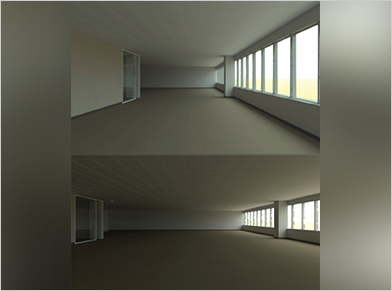
Need: For any efficient design in relation to energy, the starting or fundamental point has to be a reasonable evaluation of the requirement of natural light. In factories or workshops, light is more important to enable us to see the objects, equipment or machines, that we are working on and the things around us. The need to view through the light source may not be of much importance.
This natural light can be sourced from elevated windows skylights or a combination of both. In offices, however, the view through or transparency is preferred through the windows or the vision area of the glass façade. Most of the modern residential buildings with good outside views would demand greater transparency and also address glare and heat. They prefer clear glass without any tint or reflection and also want to address the heat transfer. This is a substantial challenge to the overall design of the building in general and the glazing aspect in particular. The challenge is even greater for shopping areas, which demand greater transparency or visibility from outside to inside.

Harnessing Natural Light: We can harness natural light more effectively with a good building design, plan and orientation in relation to the sun’s trajectory. The depth of the building or ‘floor plate depth’ plays an important role as the deeper areas will be comparatively darker than the areas near the window or glazing (see Fig. 5 & 6). Good ‘Floor Plate Geometry’ like Courtyard Plan, Atrium Plan and Finger Plans are some good examples of harnessing natural light effectively and efficiently (see Fig. 7 & 8). We should try to harness the natural light from all possible directions (see Fig. 9 & 10). We should harness more light from the sides, which remain under shade and not subjected to direct sun. It is advisable to glaze these areas more generously and use a glass of higher VLT like a clear DGU. Windows or glazing subjected to direct sun should be shaded as discussed in the following paragraphs.
Heat: Natural light will also bring heat with it. Though our current subject is natural light, we will have to discuss the simple fundamental facts about heat transfer. Heat enters the building due to two different sources, both of distinctly different characteristics. First is the energy transfer due to the difference in temperature outside and inside which is known as Thermal Transfer. The second is due to the direct incidence of the Sun and is known as Solar Transfer. Heat from these two sources can enter through three different methods or vehicles which are by way of Conduction, Convection and Radiation.
Thermal Transfer: The heat transfer due to the temperature differences is by way of conduction and is easily addressed by increasing the insulation or lowering the U-Value which is energy transfer in Watts per Sqm of glazed area, per degree Kelvin difference of temperature outside and inside. Normal float glass has a U-Value of 5.7 W/Sqm k which is reduced to 2.8 by using a Double glazed unit of glass or DGU with a 12mm air gap or cavity. This is a reasonable level of insulation or comfort for most purposes and is effective if the window or the glazing is in shade and not subjected to direct sun. U-Value can be further improved (lowered), by using Low-E glass, increasing the air gap, filling the cavity with Argon instead of air, using warm edge spacers instead of normal aluminium spacers etc. There is not much challenge to achieving a good U-Value. The real challenge is heat gain from solar transfer.

Solar Transfer: The energy transfer due to the direct incidence of the Sun is known as ‘solar transfer’ and it comes in the form of Near or Shortwave Infrared (IR) rays which have a very deep penetration capability and will always penetrate along with the light transmitted through the glass in general and clear DGU in particular. There is not much we can do to separate or filter this shortwave IR from the visible light. Any attempt to block or screen this will also screen a good part of the visible light. When shortwave IR is incident on any surface or object, it will heat up that object or surface and then this hot surface or object will start to radiate the heat in the form of Longwave IR.
Longwave IR radiation is absorbed or blocked by DGU or other insulating mediums. The result is that the Shortwave IR comes in and heats up the interiors and cannot go out. This becomes a heat trap and we face a greenhouse effect (See Fig. 11), if we do not address this most important issue. All forms of secondary heat radiations as emitted by flames, appliances, vehicles, factories, furnaces and even human bodies are also in the form of ‘Far’ or ‘Longwave’ IR radiations.
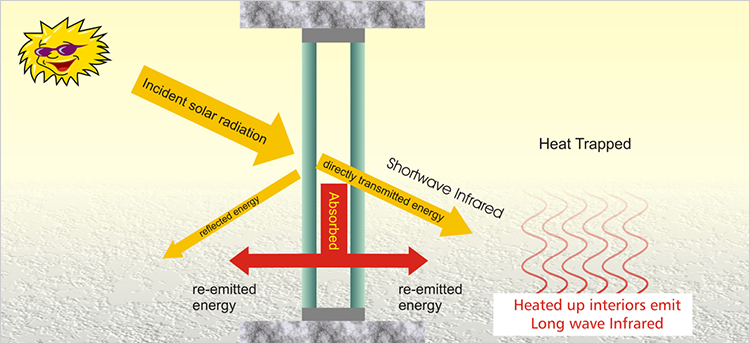 Fig. 11: Shortwave IR of the sun enters the room and heats up the interiors. Heated interiors emit Longwave IR and heat gets trapped.
Fig. 11: Shortwave IR of the sun enters the room and heats up the interiors. Heated interiors emit Longwave IR and heat gets trapped.
Shading: The simple and direct answer to this problem is external shading. To the extent feasible, we should try to design the buildings using the right orientation, Geometry and Floor plate plan to harness the natural light while avoiding the direct solar flux. Then we look into the possibilities and options to provide for external shading. In the Courtyard, Atrium or Finger Plan, we should try to take advantage of shading from one portion of a building to another.
Static External Shading Options: Unfortunately there are not many options for external shading and most solutions do not fit in the designer’s plan for aesthetics, economics of space, or FAR restrictions. Most often, this leads to a compromise on external shading and also to the comfort of users or occupants. The options for solar shading depend on the type and usage of the building. Traditional projections or chakras or balconies, Trees, Plants and creepers, and static louvers whether horizontal or vertical, are some of the options. A well-shaded building is shown at the end of this paper (see Pic. 7). Wherever these non-glass shading options are not possible or do not fit into the plan, design or aesthetics, we have to use the outer glass in the DGU to provide shading. Such glasses are usually coloured and/or coated with special spectrally selective metallic coatings.
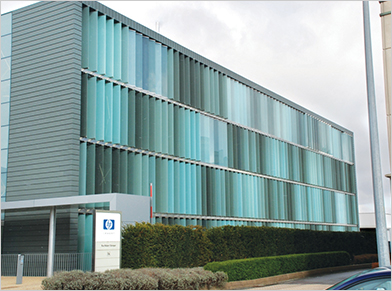
Shading with such glasses is most common for offices and commercial spaces. Glass shading can be further supplemented with any feature wall or another skin or by Ceramic frit printing on the outer glass itself. The printing can be a uniform pattern or graded pattern to leave the vision area clearer with the top band and bottom bands as densely printed. White or bright colours will obstruct the vision whereas black and dark grey will allow more see-through. Shading by glass will also shade the light (Not necessarily transparency) and here comes the question of how much light we need and the need to have the right balance. All static options will come with some amount of compromise during the day and night and also during the summers and winters. The Sun is dynamic so the right solutions should ideally be dynamic as well.
Dynamic Shading or Solar Screening Options: Traditionally, shading in summer was obtained from manually rolled mats made from thin slices of bamboo, cane or wood. Newer options are retractable awnings and shades but these are not neat solutions and do interfere with the aesthetics. Yet newer options are louvers that can rotate or fold. These can be vertical or horizontal, in glass or in aluminium. (See Pic. 3)

External roller blinds are an excellent option and they come with different colours and light transmissions to suit the preference of transparency. They are designed to meet the desired wind load conditions and they can perform perfectly during the day and night and also during the summer and winter seasons as illustrated in Fig. 12 & 13. They fit neatly onto the regular windows, new or old and are visible only minimally when retracted (see Pic. 4, 5 & 6).
Blinds encapsulated in DGU can also be considered more expensive and comparatively less efficient on energy. They are difficult to service in case of faults as all moving parts are encapsulated and sealed hermetically. It is an excellent option for hospitals as they can be kept clinically clean. Conventional curtains, blinds or other options are exposed and can be the potential sources of contamination.

Electrochromic glass in the outer pane of DGU is a futuristic option. On application of a small voltage of up to 5 volts, it changes the VLT from a high of 65 per cent to a low of 15 per cent and alters the shading as required. It can be programmed to follow the external light conditions using light sensors and applying the voltage as per shading needs. Since there are no moving parts, the functioning is almost trouble-free. Currently, it is used in some of the newer aircraft like Dreamliner and is also used in a few buildings, but the technology is patented and is still at a nascent stage and we need to wait till it becomes more affordable as the current costs are prohibitive.
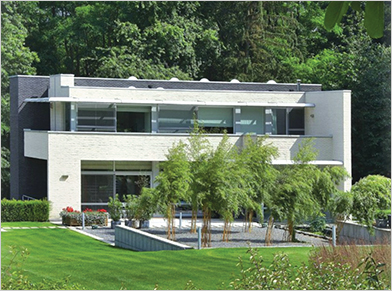
Skylights in Atriums: Should never use double glazing or Low-E glasses and should rather try to reflect, by using solar reflective coatings and use partial ceramic fritting for solar screening. It is a good idea to use controlled ventilation at the top as the hot air will travel up and form a hot air attic and help address thermal transfer by conduction. When the hot air pocket on top becomes too hot, we should release the hot air partially to draw the fresh air from below and also take advantage of the residual cooling from the walls and glazing, exposed to the core of the atrium. One can derive inspiration from old or ancient structures with high ceilings and domes and using small ventilators at the top causing natural ventilation.
Internal Shading: Curtains or blinds are extensively and most commonly used for internal shading. While they do provide a feeling of temporary relief from the glare and heat of the sun, they fail to stop the heat which enters in the form of shortwave IR and heats up the interiors. They create a temporary buffer or a heat pocket in the air space between the glass and the curtain which helps the insulation marginally. Roman or horizontal blinds are more useful in comparison to curtains as they allow for vision while cutting down the glare when drawn partially. The energy that comes in has to be mitigated either by air-conditioning or by ventilation as internal shading devices do not address the penetration of shortwave IR from the direct sun and external shading is the only answer.
